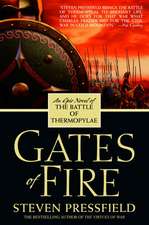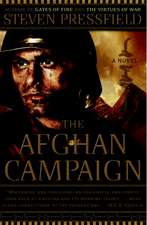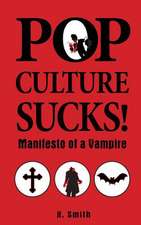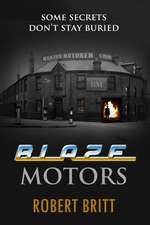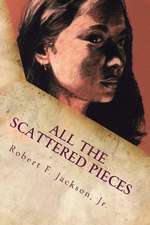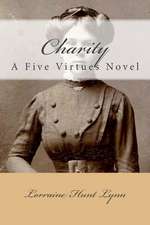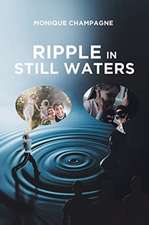Killing Rommel
Autor Steven Pressfielden Limba Engleză Paperback – 31 mai 2009
Autumn 1942. Hitler’s legions have swept across Europe; France has fallen; Churchill and the English are isolated on their island. In North Africa, Rommel and his Panzers have routed the British Eighth Army and stand poised to overrun Egypt, Suez, and the oilfields of the Middle East. With the outcome of the war hanging in the balance, the British hatch a desperate plan—send a small, highly mobile, and heavily armed force behind German lines to strike the blow that will stop the Afrika Korps in its tracks. Narrated from the point of view of a young lieutenant, Killing Rommel brings to life the flair, agility, and daring of this extraordinary secret unit, the Long Range Desert Group. Stealthy and lethal as the scorpion that serves as their insignia, they live by their motto: Non Vi Sed Arte—Not by Strength, by Guile as they gather intelligence, set up ambushes, and execute raids. Killing Rommel chronicles the tactics, weaponry, and specialized skills needed for combat, under extreme desert conditions. And it captures the camaraderie of this “band of brothers” as they perform the acts of courage and cunning crucial to the Allies’ victory in North Africa.
As in all of his previous novels, Pressfield powerfully renders the drama and intensity of warfare, the bonds of men in close combat, and the surprising human emotions and frailties that come into play on the battlefield. A vivid and authoritative depiction of the desert war, Killing Rommel brilliantly dramatizes an aspect of World War II that hasn’t been in the limelight since Patton. Combining scrupulous historical detail and accuracy with remarkable narrative momentum, this galvanizing novel heralds Pressfield’s gift for bringing more recent history to life.
| Toate formatele și edițiile | Preț | Express |
|---|---|---|
| Paperback (2) | 59.39 lei 26-32 zile | +34.75 lei 7-13 zile |
| Transworld Publishers Ltd – 7 mai 2009 | 59.39 lei 26-32 zile | +34.75 lei 7-13 zile |
| BROADWAY BOOKS – 31 mai 2009 | 116.64 lei 3-5 săpt. |
Preț: 116.64 lei
Nou
Puncte Express: 175
Preț estimativ în valută:
22.32€ • 23.22$ • 18.43£
22.32€ • 23.22$ • 18.43£
Carte disponibilă
Livrare economică 22 martie-05 aprilie
Preluare comenzi: 021 569.72.76
Specificații
ISBN-13: 9780767926164
ISBN-10: 0767926161
Pagini: 295
Dimensiuni: 132 x 203 x 20 mm
Greutate: 0.34 kg
Editura: BROADWAY BOOKS
ISBN-10: 0767926161
Pagini: 295
Dimensiuni: 132 x 203 x 20 mm
Greutate: 0.34 kg
Editura: BROADWAY BOOKS
Recenzii
"No one writes better historical fiction than Steven Pressfield." — Vince Flynn
"The finest military writer alive, bar none." — Stephen Coonts
Praise for Steven Pressfield
The Afghan Campaign
“Pressfield has done it again. The Afghan Campaign is gripping . . . an intense, fun, and thought-provoking read.” —Marine Corps Gazette
The Virtues of War
“Its expert pace, its vivid detail, its bone-crushing action, and its occasional piercing insights of sad eloquence make it an absolutely gripping read.” —Seattle Times
Last of the Amazons
“Pressfield serves up not just hair-raising battle scenes . . . but many moments of valor and cowardice, lust and bawdy humor.” —Esquire
Tides of War
“Pressfield’s battlefield scenes rank with the most convincing ever written—you can almost feel the slash of sword on skin and sense the shattering mix of panic, bravery, blood lust, and despair." —USA Today
Gates of Fire
“Vivid and exciting . . . Pressfield gives the read a perspective no ancient historian offers, a soldier’s-eye view . . . remarkable.”
—New York Times Book Review
"The finest military writer alive, bar none." — Stephen Coonts
Praise for Steven Pressfield
The Afghan Campaign
“Pressfield has done it again. The Afghan Campaign is gripping . . . an intense, fun, and thought-provoking read.” —Marine Corps Gazette
The Virtues of War
“Its expert pace, its vivid detail, its bone-crushing action, and its occasional piercing insights of sad eloquence make it an absolutely gripping read.” —Seattle Times
Last of the Amazons
“Pressfield serves up not just hair-raising battle scenes . . . but many moments of valor and cowardice, lust and bawdy humor.” —Esquire
Tides of War
“Pressfield’s battlefield scenes rank with the most convincing ever written—you can almost feel the slash of sword on skin and sense the shattering mix of panic, bravery, blood lust, and despair." —USA Today
Gates of Fire
“Vivid and exciting . . . Pressfield gives the read a perspective no ancient historian offers, a soldier’s-eye view . . . remarkable.”
—New York Times Book Review
Notă biografică
STEVEN PRESSFIELD is the author of Gates of Fire, The Virtues of War, Tides of War, Last of the Amazons, and The Afghan Campaign. He lives in Los Angeles, California.
Extras
1
DURING THE FINAL months of 1942 and the early weeks of 1943, it was my extraordinary fortune to take part in an operation behind enemy lines whose aim was to locate and kill Field Marshal Erwin Rommel, commander-in-chief of German and Italian forces in North Africa.
The operation—the term "raid" was never employed—was authorised by Lieutenant-General Bernard Law Montgomery, commanding Eighth Army; planned by the office of Lieutenant-Colonel John "Shan" Hackett, of G Raiding Force; and carried out by elements of Lieutenant-Colonel David Stirling's SAS, the Special Air Service, reinforced by irregular troopers of Major Vladimir Peniakoff's No. 1 Demolition Squadron, more familiarly known as Popski's Private Army, as well as officers and other ranks of the Long Range Desert Group. The operation placed its hopes of success not in firepower, since its heaviest vehicles were unarmoured one-and-a-half-ton Chevrolet trucks packing no armament bigger than .50-calibre aircraft Brownings and 20mm Breda guns, but on cunning, audacity and surprise. Attempts on Rommel's life had been made before. These, however, had struck at lightly defended rear areas, to which their target had withdrawn temporarily for rest or recuperation. The operation in which I took part aimed to strike at the heart of the German Afrika Korps in the field.
If this scheme sounds driven by desperation, it was. At the moment of the operation's initial planning—summer '42—Rommel and Panzerarmee Afrika had just finished routing the British Eighth Army in a series of battles in the Western Desert. German armour had driven our tanks and men across all Libya, over the Egyptian frontier, to the very gates of Alexandria. Churchill had just sacked the army's commanders. In Cairo, the code books were being burned. Rommel stood one push from Suez and the Middle East oilfields. Russia was then reeling under attack from 166 Nazi divisions. With Arab oil, Hitler's war machine could break the Red Army's back. Nor would rescue quickly come from America. The U.S. had barely entered the war; full mobilisation lay months away. The Allies were staring global defeat in the face.
Could a commando raid in North Africa make a difference? It could, the planners in Cairo believed, if it could eliminate Rommel. Rommel was the heart and soul of Axis forces in the desert. "The Jerries have no general who can replace him." This was Major Jake Easonsmith, our commander, speaking at the initial briefing. "Kill him and the beast dies."
But could such a strike succeed? It might, paradoxically, because of Rommel's own personal bravery and his audacious style of command. The Desert Fox led from the front. His mode of leadership was to place himself physically wherever the action was hottest, heedless of his own safety. "Rommel isn't reckless," declared Easonsmith. "He has simply found that in mobile warfare the commander's presence at the point of action is essential."
Rommel was notorious among his own junior officers, we were told, for materialising unannounced at forward positions, stepping down from his Fieseler Storch scout plane or his "Mammoth" Armoured Command Vehicle, occasionally from a tank or a staff car or even a motorcycle upon which he had hitched a ride. It was not exceptional for Rommel to issue orders directly to his regimental commanders or even, in the heat of the moment, to take personal command of units as small as infantry companies.
Such boldness had nearly got Rommel killed more than once. He set his plane down by accident one time amongst an Allied formation and winged away, barely, with bullets whizzing round his head. Another time he escaped capture when he ran out of fuel on the frontier wire, again amidst Commonwealth troops. Rommel was rescued a third time by the staff car carrying one of his own generals who happened, emulating his mentor, to be as far forward as Rommel was.
Rommel's trademark aggressiveness, it was hoped, could render him vulnerable to a surprise thrust. If Allied raiders could use the deep desert routes to move undetected into the German rear; if they could manoeuvre forward undiscovered; if they could fix Rommel's position . . . if a skilled and daring party could do all this, they might be able to land a blow that would change the course of the war.
***
My name is Chapman, Richmond Lawrence. In September 1942 I was a lieutenant in the 22nd Armoured Brigade, 7th Armoured Division. I was a tank officer. I commanded theoretically a "recce" (reconnaissance) troop of four A-15 Crusaders. I say theoretically because in action the turnover was so swift and violent, both from enemy fire and from mechanical breakdowns, that a troop could be down to two tanks or even one of its original kind, then reconstituted overnight with different types fresh from the repair depots—American Grants, British Crusaders, and the U.S.-built aircraft-engined Stuarts that their crews called Honeys. Likewise the men turned over. That is another story. The point for this tale is that, at that time, circumstances conspired to export me from the Armoured Division and translate me into the Long Range Desert Group.
My presence amongst this company was in a technical capacity only; I had been PTDed ("personnel temporarily detached") to the formation with an eye to assessing "the going" over which the patrols would travel—meaning the terrain's suitability on future occasion to bear tanks and heavy transport. I was by no means the first tank officer so assigned. Advisers from the Royal Armoured Corps regularly hitch-hiked on LRDG patrols for similar purposes; Royal Air Force officers did the same, scouting out potential landing grounds in the inner desert.
The mission of the Long Range Desert Group was raiding and reconnaissance in the enemy's rear. At the time I joined it, the unit operated in patrols of five or six trucks, with one officer and fifteen to twenty men. Patrols were entirely self-contained, carrying all their own petrol, water, rations, ammunition and spare parts. In addition to its own combat operations, the Long Range Desert Group conveyed spies and agents on covert assignments and provided transport and navigation for assault parties of the SAS and other commando outfits. The group's greatest joy, however, was to work "beat-ups," their slang term for attacks on enemy airfields, motor assembly areas and convoy routes.
At the time of the British retreat to Alamein in summer '42, the LRDG had been in business for almost two years. Its raids had destroyed and damaged hundreds of Axis aircraft and caused thousands of German and Italian troops to be pulled out of the front lines and redeployed to provide rear-area security. The formation had acquired a certain swashbuckling glamour. Volunteers queued by the hundreds. Getting in was no cinch, however. From one batch of seven hundred applicants, the LRDG took only twelve. Criteria for selection were less wild and woolly than one might imagine. The group was not seeking buccaneers or assassins; what its officers wanted was the solid, mature sort—the type of chap who could think for himself under pressure, work in close quarters with others, and handle extremes not only of danger but of tedium, hardship and privation. The virtues of resourcefulness, self-composure, patience, hardiness, not to mention a sense of humour, were prized as highly as those of bravery, aggressiveness, and raw martial rigour.
In this I believe the LRDG was spot on. One of the factors that has kept me until now from writing of my own combat experiences is the uneasiness I have felt about the genre of war literature. Tales of heroes, the nobility of sacrifice and so forth have always made me uneasy. They run counter to my experience. From what I've seen, the operations of war are constituted less of glorious attacks and valiant defences and more of an ongoing succession of mundane and often excruciating balls-ups. The patrol of which I write, typical of so many, achieved little heroic beyond its own survival, save at the very end, and then less by military or tactical brilliance than by luck and its protagonists' stubborn, even mulish, refusal to quit. Those actions of its men that may legitimately claim the name of gallantry came about largely from attempts at self-extrication from peril, most of which we got ourselves into by our own overzealousness, and the main of which were performed either in the heat of instinct or the frenzy of blood terror. The men who performed these heroics often could not recall them in the aftermath.
Let me say this about courage under fire. In my experience, valour in action counts for far less than simply performing one's commonplace task without cocking it up. This is by no means as simple as it sounds. In many ways, it's the most difficult thing in the world. Certainly for every glorious death memorialised in despatches, one could count twenty others that were the product of fatigue, confusion, inattention, over–or underassertion of authority, panic, timidity, hesitation, honest errors or miscalculations, mishaps and accidents, collisions, mechanical breakdowns, lost or forgotten spare parts, intelligence deficiencies, mistranslated codes, late or inadequate medical care, not to say bollocksed-up orders (or the failure to grasp and implement proper orders), misdirected fire from one's own troops or allies, and general all-around muddling, sometimes the fault of the dead trooper himself. The role of the officer, in my experience, is nothing grander than to stand sentinel over himself and his men, towards the end of keeping them from forgetting who they are and what their objective is, how to get there, and what equipment they're supposed to have when they arrive. Oh, and getting back. That's the tricky part. Such success as the Long Range Desert Group enjoyed may be credited in no small measure to the superior leadership of Colonel Ralph Bagnold and Lieutenant-Colonel Guy Prendergast, its founder and follow-on OC, for whom the applications of preparation and thoroughness far surpassed those of courage and intrepidity.
Before being seconded to the Long Range Desert Group, I served, as I said, with the 22nd Armoured Brigade of the 7th Armoured Division--the famous "Desert Rats." Our regiment was brought forward from the Delta in April and May 1942 as replacement crews during the chaos of the battles of Gazala and the Cauldron. 22nd Armoured Brigade had begun the campaign as part of 1st Armoured Division but was taken under command of 7th Armoured Division in the emergency. Her sister armoured regiments (which at that point had been reduced to composite formations) were the 3rd and 4th County of London Yeomanry and the 2nd Royal Gloucestershire Hussars. We too were a Yeomanry regiment, that is, a home formation of the Territorial Army—cavalry recently mechanised and converted to armour.
To the civilian (and to me as well, before I became familiar with them), tanks appear to be invulnerable behemoths beneath the massive bulk of their armour, their great guns, and the deafening clamour of their engines. In reality, a tank is fragile as a flower. A three-foot slit-trench can snap a track; a too-tight turn can shred the pins that link the treads. An armoured column guzzles petrol; unreplenished, it can stay in action no more than two and a half hours, less over rough going or at speed. The range of a British Matilda was seventy miles; under battle conditions, American Stuarts had to fill up every forty.
Tanks advance tethered to their B-echelon vehicles—the lorries, thin-skinners and ragtops that carry the petrol and rations, water, lubricants and ammunition without which the armoured monsters they serve become nothing but clumsy and stationary targets.
A tank depends utterly upon its supporting combat arms. Without infantry to protect its flanks and rear, to knock out anti-tank guns and to clear minefields, a tank is vulnerable to all manner of evils. Without artillery and anti-tank fire to shield it from the enemy's armour, without aircraft to sling bombs and cannon fire at the foe advancing outside its field of vision, the tank is a plum, a bull's-eye, a sitting duck. High-explosive shells can junk its suspension and tracks; armour-piercing rounds rip through its turret. Anti-tank guns can penetrate its armour at two thousand yards. In a tank, fighter planes and bombers are on top of you before you can hear them. You're deaf and blind in a tank.
The commander in a Crusader or an American Grant rides directly above the gearbox and engine, whose combined din screams at such ungodly volume that an enemy shell can explode thirty feet away and you can't even hear it. At speed over uneven ground, the tank commander bangs and lurches within the cylinder of his cupola, eyes fixed to his field glasses, ears fastened to his headset, concentrating hour after hour not only upon the flats, hummocks, ravines, wadis and dead ground of the desert on all sides of him—and of course upon the enemy manoeuvring, lurking and darting over it—but also and without let-up upon the crackling cacophony of his squadron and regimental wireless nets, over which come his orders and his relief, of which he must miss nothing, as his own life and those of his men depend on it. Then there's the heat. Captain James Mattoon, my original squadron leader and a mechanical engineer in civilian life, calculated that an external temperature of 10 degrees Celsius (50 Fahrenheit) was ideal for a tank on the move. At 10 outside, you rode at 20 inside (70 Fahrenheit). For every degree-Fahrenheit rise outside, interior temperature rose a degree and a half. Seventy out was 100 in; 90, 120. At 100 outside—and the thermometer reached and exceeded that every summer day in the desert—you were broiling inside at 135.
Still, I loved tanks. I loved the Armoured Division. What I hated, what we all abhorred, were the vain and courage-crazy tactics which obsolete doctrine and our own undergunned and underarmoured tanks compelled us to employ. While Rommel's Mark III and Mark IV Panzers advanced in self-covering leap-frogs, backed by crack motorised infantry and screens of lethal 88mm and 50mm anti-tank guns, our Crusaders, Grants and Honeys found themselves again and again on their own, isolated and exposed. Outranged by a thousand yards by the Mark IV's long-barrelled 75s (and nearly as far by the Mark IIIs), our squadrons had no alternative but to dash from one spot of cover to the next, when and if such sites could be discovered, seeking either to flank the foe or to charge at him head-on, usually across open ground, in a desperate attempt to get within gun range before he or his anti-tank screens turned us into flamers or "brew-ups." The enemy reckoned this of course and exploited it with feigned retreats, flanking manoeuvres and ambushes into which we blundered time and again.
The retreat to the Egyptian frontier in summer 1942 culminated for me in a fiasco on a sandy track alongside the Cairo-Mersa Matruh rail line. My troop of four tanks had been reduced to one Crusader and one American Grant, our squadron having lost, over the preceding twenty-one days, no fewer than nineteen others—Valentines, Honeys, A-10 and A-13 Cruisers, even a pair of captured Italian M-13s. Some had been brought up from the repair shops as replacements, others salvaged intact or refitted in the field, along with their crews, who were cycled through so quickly owing to wounds, death or capture that most barely learnt my name and I theirs before their place was taken by the next round fresh from the pool companies. On the twenty-first day I found myself separated from my squadron (who were a mile or two ahead), bottlenecked on the track west of Fuka in a hundred-mile traffic jam, still that distance short of Alexandria, with a hundred more to Cairo. My wife, Rose, was a Navy telegrapher in Alexandria; she was pregnant with our first child. I was desperate to get her evacuated before Rommel and Panzerarmee Afrika overran Egypt all the way to Suez. Suddenly I spotted a break in the column, with clear sailing ahead, cross-country, at least enough to get round the jam and rejoin my squadron. "Driver, hard right," I commanded. Off we rumbled, steamrolling a wire barrier, directly on to a Mark IV mine.
From the Hardcover edition.
DURING THE FINAL months of 1942 and the early weeks of 1943, it was my extraordinary fortune to take part in an operation behind enemy lines whose aim was to locate and kill Field Marshal Erwin Rommel, commander-in-chief of German and Italian forces in North Africa.
The operation—the term "raid" was never employed—was authorised by Lieutenant-General Bernard Law Montgomery, commanding Eighth Army; planned by the office of Lieutenant-Colonel John "Shan" Hackett, of G Raiding Force; and carried out by elements of Lieutenant-Colonel David Stirling's SAS, the Special Air Service, reinforced by irregular troopers of Major Vladimir Peniakoff's No. 1 Demolition Squadron, more familiarly known as Popski's Private Army, as well as officers and other ranks of the Long Range Desert Group. The operation placed its hopes of success not in firepower, since its heaviest vehicles were unarmoured one-and-a-half-ton Chevrolet trucks packing no armament bigger than .50-calibre aircraft Brownings and 20mm Breda guns, but on cunning, audacity and surprise. Attempts on Rommel's life had been made before. These, however, had struck at lightly defended rear areas, to which their target had withdrawn temporarily for rest or recuperation. The operation in which I took part aimed to strike at the heart of the German Afrika Korps in the field.
If this scheme sounds driven by desperation, it was. At the moment of the operation's initial planning—summer '42—Rommel and Panzerarmee Afrika had just finished routing the British Eighth Army in a series of battles in the Western Desert. German armour had driven our tanks and men across all Libya, over the Egyptian frontier, to the very gates of Alexandria. Churchill had just sacked the army's commanders. In Cairo, the code books were being burned. Rommel stood one push from Suez and the Middle East oilfields. Russia was then reeling under attack from 166 Nazi divisions. With Arab oil, Hitler's war machine could break the Red Army's back. Nor would rescue quickly come from America. The U.S. had barely entered the war; full mobilisation lay months away. The Allies were staring global defeat in the face.
Could a commando raid in North Africa make a difference? It could, the planners in Cairo believed, if it could eliminate Rommel. Rommel was the heart and soul of Axis forces in the desert. "The Jerries have no general who can replace him." This was Major Jake Easonsmith, our commander, speaking at the initial briefing. "Kill him and the beast dies."
But could such a strike succeed? It might, paradoxically, because of Rommel's own personal bravery and his audacious style of command. The Desert Fox led from the front. His mode of leadership was to place himself physically wherever the action was hottest, heedless of his own safety. "Rommel isn't reckless," declared Easonsmith. "He has simply found that in mobile warfare the commander's presence at the point of action is essential."
Rommel was notorious among his own junior officers, we were told, for materialising unannounced at forward positions, stepping down from his Fieseler Storch scout plane or his "Mammoth" Armoured Command Vehicle, occasionally from a tank or a staff car or even a motorcycle upon which he had hitched a ride. It was not exceptional for Rommel to issue orders directly to his regimental commanders or even, in the heat of the moment, to take personal command of units as small as infantry companies.
Such boldness had nearly got Rommel killed more than once. He set his plane down by accident one time amongst an Allied formation and winged away, barely, with bullets whizzing round his head. Another time he escaped capture when he ran out of fuel on the frontier wire, again amidst Commonwealth troops. Rommel was rescued a third time by the staff car carrying one of his own generals who happened, emulating his mentor, to be as far forward as Rommel was.
Rommel's trademark aggressiveness, it was hoped, could render him vulnerable to a surprise thrust. If Allied raiders could use the deep desert routes to move undetected into the German rear; if they could manoeuvre forward undiscovered; if they could fix Rommel's position . . . if a skilled and daring party could do all this, they might be able to land a blow that would change the course of the war.
***
My name is Chapman, Richmond Lawrence. In September 1942 I was a lieutenant in the 22nd Armoured Brigade, 7th Armoured Division. I was a tank officer. I commanded theoretically a "recce" (reconnaissance) troop of four A-15 Crusaders. I say theoretically because in action the turnover was so swift and violent, both from enemy fire and from mechanical breakdowns, that a troop could be down to two tanks or even one of its original kind, then reconstituted overnight with different types fresh from the repair depots—American Grants, British Crusaders, and the U.S.-built aircraft-engined Stuarts that their crews called Honeys. Likewise the men turned over. That is another story. The point for this tale is that, at that time, circumstances conspired to export me from the Armoured Division and translate me into the Long Range Desert Group.
My presence amongst this company was in a technical capacity only; I had been PTDed ("personnel temporarily detached") to the formation with an eye to assessing "the going" over which the patrols would travel—meaning the terrain's suitability on future occasion to bear tanks and heavy transport. I was by no means the first tank officer so assigned. Advisers from the Royal Armoured Corps regularly hitch-hiked on LRDG patrols for similar purposes; Royal Air Force officers did the same, scouting out potential landing grounds in the inner desert.
The mission of the Long Range Desert Group was raiding and reconnaissance in the enemy's rear. At the time I joined it, the unit operated in patrols of five or six trucks, with one officer and fifteen to twenty men. Patrols were entirely self-contained, carrying all their own petrol, water, rations, ammunition and spare parts. In addition to its own combat operations, the Long Range Desert Group conveyed spies and agents on covert assignments and provided transport and navigation for assault parties of the SAS and other commando outfits. The group's greatest joy, however, was to work "beat-ups," their slang term for attacks on enemy airfields, motor assembly areas and convoy routes.
At the time of the British retreat to Alamein in summer '42, the LRDG had been in business for almost two years. Its raids had destroyed and damaged hundreds of Axis aircraft and caused thousands of German and Italian troops to be pulled out of the front lines and redeployed to provide rear-area security. The formation had acquired a certain swashbuckling glamour. Volunteers queued by the hundreds. Getting in was no cinch, however. From one batch of seven hundred applicants, the LRDG took only twelve. Criteria for selection were less wild and woolly than one might imagine. The group was not seeking buccaneers or assassins; what its officers wanted was the solid, mature sort—the type of chap who could think for himself under pressure, work in close quarters with others, and handle extremes not only of danger but of tedium, hardship and privation. The virtues of resourcefulness, self-composure, patience, hardiness, not to mention a sense of humour, were prized as highly as those of bravery, aggressiveness, and raw martial rigour.
In this I believe the LRDG was spot on. One of the factors that has kept me until now from writing of my own combat experiences is the uneasiness I have felt about the genre of war literature. Tales of heroes, the nobility of sacrifice and so forth have always made me uneasy. They run counter to my experience. From what I've seen, the operations of war are constituted less of glorious attacks and valiant defences and more of an ongoing succession of mundane and often excruciating balls-ups. The patrol of which I write, typical of so many, achieved little heroic beyond its own survival, save at the very end, and then less by military or tactical brilliance than by luck and its protagonists' stubborn, even mulish, refusal to quit. Those actions of its men that may legitimately claim the name of gallantry came about largely from attempts at self-extrication from peril, most of which we got ourselves into by our own overzealousness, and the main of which were performed either in the heat of instinct or the frenzy of blood terror. The men who performed these heroics often could not recall them in the aftermath.
Let me say this about courage under fire. In my experience, valour in action counts for far less than simply performing one's commonplace task without cocking it up. This is by no means as simple as it sounds. In many ways, it's the most difficult thing in the world. Certainly for every glorious death memorialised in despatches, one could count twenty others that were the product of fatigue, confusion, inattention, over–or underassertion of authority, panic, timidity, hesitation, honest errors or miscalculations, mishaps and accidents, collisions, mechanical breakdowns, lost or forgotten spare parts, intelligence deficiencies, mistranslated codes, late or inadequate medical care, not to say bollocksed-up orders (or the failure to grasp and implement proper orders), misdirected fire from one's own troops or allies, and general all-around muddling, sometimes the fault of the dead trooper himself. The role of the officer, in my experience, is nothing grander than to stand sentinel over himself and his men, towards the end of keeping them from forgetting who they are and what their objective is, how to get there, and what equipment they're supposed to have when they arrive. Oh, and getting back. That's the tricky part. Such success as the Long Range Desert Group enjoyed may be credited in no small measure to the superior leadership of Colonel Ralph Bagnold and Lieutenant-Colonel Guy Prendergast, its founder and follow-on OC, for whom the applications of preparation and thoroughness far surpassed those of courage and intrepidity.
Before being seconded to the Long Range Desert Group, I served, as I said, with the 22nd Armoured Brigade of the 7th Armoured Division--the famous "Desert Rats." Our regiment was brought forward from the Delta in April and May 1942 as replacement crews during the chaos of the battles of Gazala and the Cauldron. 22nd Armoured Brigade had begun the campaign as part of 1st Armoured Division but was taken under command of 7th Armoured Division in the emergency. Her sister armoured regiments (which at that point had been reduced to composite formations) were the 3rd and 4th County of London Yeomanry and the 2nd Royal Gloucestershire Hussars. We too were a Yeomanry regiment, that is, a home formation of the Territorial Army—cavalry recently mechanised and converted to armour.
To the civilian (and to me as well, before I became familiar with them), tanks appear to be invulnerable behemoths beneath the massive bulk of their armour, their great guns, and the deafening clamour of their engines. In reality, a tank is fragile as a flower. A three-foot slit-trench can snap a track; a too-tight turn can shred the pins that link the treads. An armoured column guzzles petrol; unreplenished, it can stay in action no more than two and a half hours, less over rough going or at speed. The range of a British Matilda was seventy miles; under battle conditions, American Stuarts had to fill up every forty.
Tanks advance tethered to their B-echelon vehicles—the lorries, thin-skinners and ragtops that carry the petrol and rations, water, lubricants and ammunition without which the armoured monsters they serve become nothing but clumsy and stationary targets.
A tank depends utterly upon its supporting combat arms. Without infantry to protect its flanks and rear, to knock out anti-tank guns and to clear minefields, a tank is vulnerable to all manner of evils. Without artillery and anti-tank fire to shield it from the enemy's armour, without aircraft to sling bombs and cannon fire at the foe advancing outside its field of vision, the tank is a plum, a bull's-eye, a sitting duck. High-explosive shells can junk its suspension and tracks; armour-piercing rounds rip through its turret. Anti-tank guns can penetrate its armour at two thousand yards. In a tank, fighter planes and bombers are on top of you before you can hear them. You're deaf and blind in a tank.
The commander in a Crusader or an American Grant rides directly above the gearbox and engine, whose combined din screams at such ungodly volume that an enemy shell can explode thirty feet away and you can't even hear it. At speed over uneven ground, the tank commander bangs and lurches within the cylinder of his cupola, eyes fixed to his field glasses, ears fastened to his headset, concentrating hour after hour not only upon the flats, hummocks, ravines, wadis and dead ground of the desert on all sides of him—and of course upon the enemy manoeuvring, lurking and darting over it—but also and without let-up upon the crackling cacophony of his squadron and regimental wireless nets, over which come his orders and his relief, of which he must miss nothing, as his own life and those of his men depend on it. Then there's the heat. Captain James Mattoon, my original squadron leader and a mechanical engineer in civilian life, calculated that an external temperature of 10 degrees Celsius (50 Fahrenheit) was ideal for a tank on the move. At 10 outside, you rode at 20 inside (70 Fahrenheit). For every degree-Fahrenheit rise outside, interior temperature rose a degree and a half. Seventy out was 100 in; 90, 120. At 100 outside—and the thermometer reached and exceeded that every summer day in the desert—you were broiling inside at 135.
Still, I loved tanks. I loved the Armoured Division. What I hated, what we all abhorred, were the vain and courage-crazy tactics which obsolete doctrine and our own undergunned and underarmoured tanks compelled us to employ. While Rommel's Mark III and Mark IV Panzers advanced in self-covering leap-frogs, backed by crack motorised infantry and screens of lethal 88mm and 50mm anti-tank guns, our Crusaders, Grants and Honeys found themselves again and again on their own, isolated and exposed. Outranged by a thousand yards by the Mark IV's long-barrelled 75s (and nearly as far by the Mark IIIs), our squadrons had no alternative but to dash from one spot of cover to the next, when and if such sites could be discovered, seeking either to flank the foe or to charge at him head-on, usually across open ground, in a desperate attempt to get within gun range before he or his anti-tank screens turned us into flamers or "brew-ups." The enemy reckoned this of course and exploited it with feigned retreats, flanking manoeuvres and ambushes into which we blundered time and again.
The retreat to the Egyptian frontier in summer 1942 culminated for me in a fiasco on a sandy track alongside the Cairo-Mersa Matruh rail line. My troop of four tanks had been reduced to one Crusader and one American Grant, our squadron having lost, over the preceding twenty-one days, no fewer than nineteen others—Valentines, Honeys, A-10 and A-13 Cruisers, even a pair of captured Italian M-13s. Some had been brought up from the repair shops as replacements, others salvaged intact or refitted in the field, along with their crews, who were cycled through so quickly owing to wounds, death or capture that most barely learnt my name and I theirs before their place was taken by the next round fresh from the pool companies. On the twenty-first day I found myself separated from my squadron (who were a mile or two ahead), bottlenecked on the track west of Fuka in a hundred-mile traffic jam, still that distance short of Alexandria, with a hundred more to Cairo. My wife, Rose, was a Navy telegrapher in Alexandria; she was pregnant with our first child. I was desperate to get her evacuated before Rommel and Panzerarmee Afrika overran Egypt all the way to Suez. Suddenly I spotted a break in the column, with clear sailing ahead, cross-country, at least enough to get round the jam and rejoin my squadron. "Driver, hard right," I commanded. Off we rumbled, steamrolling a wire barrier, directly on to a Mark IV mine.
From the Hardcover edition.
Descriere
The acclaimed, bestselling novelist of ancient warfare extends his talents to the modern world with a World War II tale based on the real-life exploits of the Long Range Desert Group.



